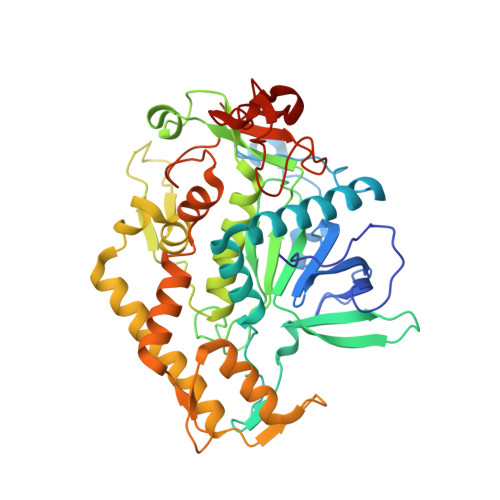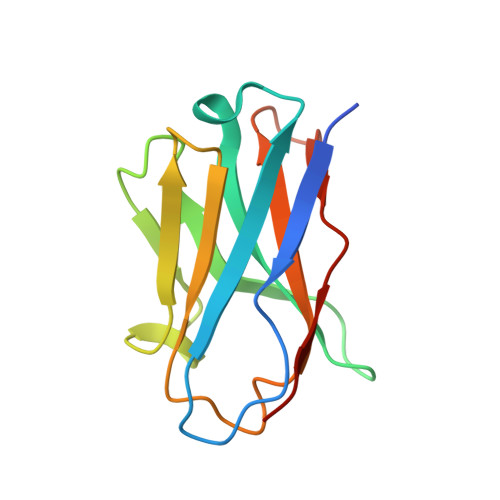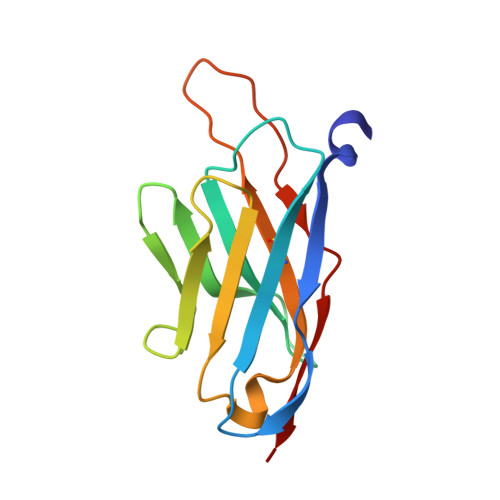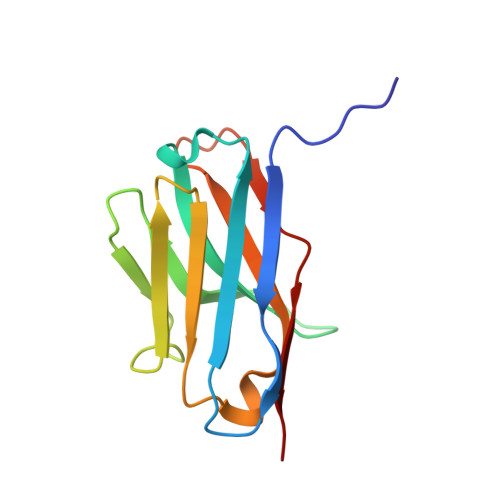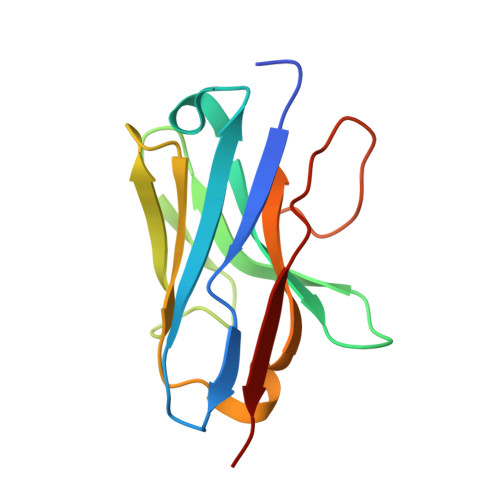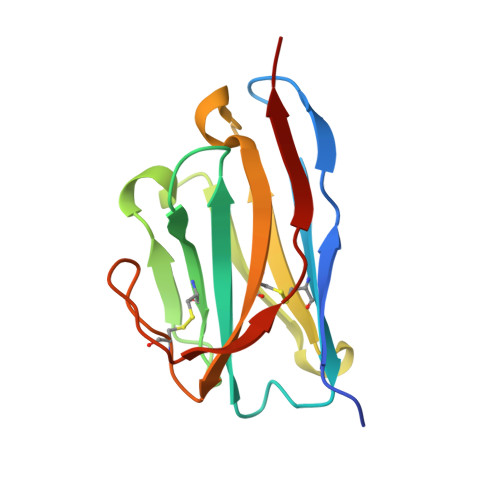Probing the structure and function of the protease domain of botulinum neurotoxins using single-domain antibodies.
Lam, K.H., Tremblay, J.M., Perry, K., Ichtchenko, K., Shoemaker, C.B., Jin, R.(2022) PLoS Pathog 18: e1010169-e1010169
- PubMed: 34990480
- DOI: https://doi.org/10.1371/journal.ppat.1010169
- Primary Citation of Related Structures:
7L6V, 7LZP, 7M1H, 7NA9, 7T5F - PubMed Abstract:
Botulinum neurotoxins (BoNTs) are among the deadliest of bacterial toxins. BoNT serotype A and B in particular pose the most serious threat to humans because of their high potency and persistence. To date, there is no effective treatment for late post-exposure therapy of botulism patients. Here, we aim to develop single-domain variable heavy-chain (VHH) antibodies targeting the protease domains (also known as the light chain, LC) of BoNT/A and BoNT/B as antidotes for post-intoxication treatments. Using a combination of X-ray crystallography and biochemical assays, we investigated the structures and inhibition mechanisms of a dozen unique VHHs that recognize four and three non-overlapping epitopes on the LC of BoNT/A and BoNT/B, respectively. We show that the VHHs that inhibit the LC activity occupy the extended substrate-recognition exosites or the cleavage pocket of LC/A or LC/B and thus block substrate binding. Notably, we identified several VHHs that recognize highly conserved epitopes across BoNT/A or BoNT/B subtypes, suggesting that these VHHs exhibit broad subtype efficacy. Further, we identify two novel conformations of the full-length LC/A, that could aid future development of inhibitors against BoNT/A. Our studies lay the foundation for structure-based engineering of protein- or peptide-based BoNT inhibitors with enhanced potencies and cross-subtypes properties.
Organizational Affiliation:
Department of Physiology and Biophysics, University of California, Irvine, California, United States of America.








